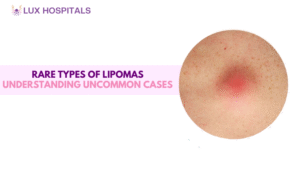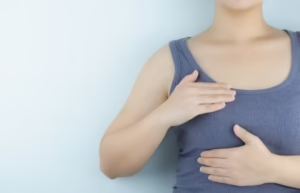10 Best Medical Treatments for Stubborn Corns

Corns are an extremely prevalent foot ailment that leads to pain and discomfort. This corn can be managed with good care, but stubborn corns have to be taken care of medically. If they are left untreated, they tend to become worse and develop secondary complications.
In this article, we will discuss the causes and side effects, why stubborn corns develop, preventive actions, and the best medical care available for adamant corns.
What Triggers Stubborn Corns?
Corns are triggered by repetitive pressure or friction on certain foot parts. Some of the common causes are:
- Incorrect shoes: Shoes with high heels or extremely tight shoes tend to put more pressure on certain parts of the foot.
- Standing or walking for hours: Repetitive pressure on the feet leads to hard skin build-up.
- Abnormal gait or foot deformity: Individuals with hammertoes, bunions, or flat feet are at a higher risk of developing stubborn corns.
- Going without a sock: Skin-to-shoe contact causes increased friction.
- Repetitive occupation: Jobs or recreational activities that involve repeated pressure on the feet.
- Aging: With age, skin thins and loses its natural flexibility and thus becomes more susceptible to stubborn corns.
Side Effects of Stubborn Corns
If left untreated, stubborn corns can lead to numerous complications, which are as follows:
- Pain and discomfort: Gait is impaired by the hard skin.
- Inflammation and redness: Red and inflamed areas are formed.
- Risk of infection: If cracked or broken, bacteria can enter the corns and lead to infections.
- Mobility issues: Severely formed corns can impair gait and posture.
- Damage to nerves: Neglecting stubborn corns for a long time can lead to nerve compression and pain.
Best Medical Therapies for Recurrent Corns
When home treatments do not work, medical therapies are used to remove recurrent corns safely. The following are some of the best medical therapies:
1. Salicylic Acid Therapies
Salicylic acid is a keratolytic drug that softens and peels hardened skin. It comes in the forms of creams, patches, and liquids.
2. Cryotherapy (Freezing the Corn)
Cryotherapy includes freezing and removing the hard tissue with liquid nitrogen. It is a good remedy for deeply seated, stubborn corns.
3. Laser Therapy
Laser therapy treats the corn with intense light, which fragments the hardened tissue. The process is less agonizing and cures faster.
4. Surgical Removal
Limited surgery can be required for highly stubborn corns. A podiatrist can remove the corn by cutting or fix underlying foot deformities so that it never occurs again.
5. Orthotic Devices
Orthotic inserts inserted in a custom manner redistribute pressure on the foot to avoid creating recurring corns.
6. Antibiotic Treatment
A doctor may prescribe antibiotics if the area is infected to avoid complications.
7. Foot Soaking and Exfoliation
Soaking feet in warm water daily with Epsom salt and exfoliating gently with a pumice stone can correct minor corns. It is not always effective, however, for recurring corns.
8. Medical-Grade Padding and Shoe Inserts
Medical-grade padding or shoe inserts specifically ordered by the podiatrist can be used to relieve pressure and avoid worsening corns.
9. Physical Therapy for Foot Alignment
Physical therapy can correct misalignment problems in people with foot deformities or irregular gait, decreasing the incidence of recurrent recalcitrant corns.
10. Hydrocolloid Bandages
Hydrocolloid bandages cushion the region with a corn, minimizing friction and speeding up healing of recalcitrant corns.
Safety Measures Against Stubborn Corns
Stubborn corns may be prevented with the simple measures given below:
- Select proper footwear: Wear well-fitting, comfortable shoes that have enough toe space.
- Utilize protective padding: Corn pads or cushioned insoles reduce friction.
- Practice foot hygiene: Keep feet clean and moisturized to avoid excessive dryness.
- Trim nails carefully: Long nails alter foot alignment, which creates pressure points.
- Change socks often: Moisture-wicking socks avoid excessive sweating.
- Avoid going barefoot: Insulate feet from rough surfaces with proper footwear.
- Moisturize every day: Moisturizing every day prevents over-hardening of the skin that will result in resilient corns.
Conclusion
Stubborn corns are painful and frustrating, but with proper medical treatments, they can be managed. Preventive measures like using the right kind of footwear and following good foot hygiene can stop them. When you have stubborn corns that do not improve with home treatment, visit a doctor or podiatrist for proper treatment.
With proper precautions and medical care, you can get rid of persistent corns and enjoy healthy pain-free feet
Frequently Asked Questions
Mild corns can be treated at home by soaking and exfoliating, but stubborn corns might need medical treatment.
It can take weeks to days for stubborn corns to heal fully depending on the treatment.
OTC treatments might be effective for small ones, but medical treatment is advised for chronic corns.
Yes, unless the cause is removed, chronic corns can recur.
Surgery is reserved for extreme, recurring, stubborn corns that will not respond to other therapies.
Yes, people with diabetes are more likely to develop foot complications, such as stubborn corns, and should see a doctor.
Stubborn corns develop as a result of extended pressure and rubbing, which causes thickening of the skin due to its natural protective tendency. The keratinized shield thickens gradually with time, resulting in a hardened coating that often becomes tender or painful and gives rise to a hard lump




















